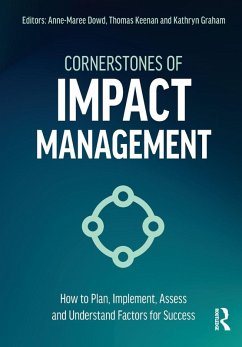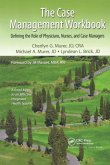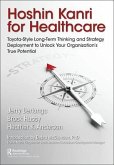Cornerstones of Impact Management
How to Plan, Implement, Assess, and Understand Factors for Success
Herausgeber: Dowd, Anne-Maree; Keenan, Thomas; Graham, Kathryn
Cornerstones of Impact Management
How to Plan, Implement, Assess, and Understand Factors for Success
Herausgeber: Dowd, Anne-Maree; Keenan, Thomas; Graham, Kathryn
- Broschiertes Buch
- Merkliste
- Auf die Merkliste
- Bewerten Bewerten
- Teilen
- Produkt teilen
- Produkterinnerung
- Produkterinnerung
The demand for effective impact management is driving the need for skilled impact professionals. A 'how-to' guide for impact management, this book provides readers with an overview of the science of impact and best practices in impact management.
Andere Kunden interessierten sich auch für
![The Case Management Workbook The Case Management Workbook]() Cherilyn G. MurerThe Case Management Workbook69,99 €
Cherilyn G. MurerThe Case Management Workbook69,99 €![Risk Management and Public Service Reform Risk Management and Public Service Reform]() Iniobong EnangRisk Management and Public Service Reform56,99 €
Iniobong EnangRisk Management and Public Service Reform56,99 €![Emergency Services Management Emergency Services Management]() Paresh WankhadeEmergency Services Management35,99 €
Paresh WankhadeEmergency Services Management35,99 €![Hoshin Kanri for Healthcare Hoshin Kanri for Healthcare]() Gerard A BerlangaHoshin Kanri for Healthcare55,99 €
Gerard A BerlangaHoshin Kanri for Healthcare55,99 €![Analyzing Form, Function, and Financing of the U.S. Health Care System Analyzing Form, Function, and Financing of the U.S. Health Care System]() Paula Stamps DustonAnalyzing Form, Function, and Financing of the U.S. Health Care System45,99 €
Paula Stamps DustonAnalyzing Form, Function, and Financing of the U.S. Health Care System45,99 €![Four Cornerstones of Inspirational Leadership Four Cornerstones of Inspirational Leadership]() Colonel Ajai LalFour Cornerstones of Inspirational Leadership14,99 €
Colonel Ajai LalFour Cornerstones of Inspirational Leadership14,99 €![Making Public Private Partnerships Work Making Public Private Partnerships Work]() Michael GeddesMaking Public Private Partnerships Work63,99 €
Michael GeddesMaking Public Private Partnerships Work63,99 €-
-
-
The demand for effective impact management is driving the need for skilled impact professionals. A 'how-to' guide for impact management, this book provides readers with an overview of the science of impact and best practices in impact management.
Produktdetails
- Produktdetails
- Verlag: Taylor & Francis Ltd
- Seitenzahl: 320
- Erscheinungstermin: 7. Oktober 2025
- Englisch
- Abmessung: 246mm x 174mm
- Gewicht: 630g
- ISBN-13: 9781041125129
- ISBN-10: 1041125127
- Artikelnr.: 74777947
- Herstellerkennzeichnung
- Libri GmbH
- Europaallee 1
- 36244 Bad Hersfeld
- gpsr@libri.de
- Verlag: Taylor & Francis Ltd
- Seitenzahl: 320
- Erscheinungstermin: 7. Oktober 2025
- Englisch
- Abmessung: 246mm x 174mm
- Gewicht: 630g
- ISBN-13: 9781041125129
- ISBN-10: 1041125127
- Artikelnr.: 74777947
- Herstellerkennzeichnung
- Libri GmbH
- Europaallee 1
- 36244 Bad Hersfeld
- gpsr@libri.de
Anne-Maree Dowd is the Executive Manager of Performance and Evaluation at Australia's national science agency, CSIRO. She has led the impact agenda within CSIRO since 2014 and has been involved at the international level on research impact. She holds a PhD in Organisational Behaviour from the University of Queensland. Thomas Keenan is the director of Tractuum, an impact management consultancy based in Brisbane, Queensland. He led the planning and evaluation activities of the CSIRO Impact Team from 2016-2019. He has over 15 years' experience as both a practitioner and researcher with the field of business management and has been engaged as an executive leader within, and a consultant to, national for-profit and not-for-profit SMEs, as well as government agencies and private corporations. Kathryn Graham is the Executive Director of Performance Management and Evaluation at Alberta Innovates, a Canadian-based publicly-funded provincial health research and innovation organization. She has over 25 years of strategic evaluation experience in health care, and health research and innovation R(&I). Her expertise is in developing performance management, evaluation, impact strategies, and implementing assessment frameworks for complex systems and organizations. She and her team successfully implemented the CAHS (2009) health research impact framework and was instrumental in its application nationally and internationally. Kathryn was also one of the founders of https://www.theinternationalschoolonria.com
Foreword iii
Acknowledgement of contributors (in alphabetical order) ix
Preface x
Introduction: The foundations of impact xi
Cornerstone 1. estABLIsH tHe ConteXt For IMPACt 1
1. Impact by design 3
With contributions from Anne-Maree Dowd, Karen Cosgrove, Kathryn Graham,
Alex Pollitt and Mark Taylor
Engagement 4
Leadership 11
Impact is an asset 15
Source material 23
Helpful links or resources 24
2. Inspiring and fostering a positive impact culture 25
With contributions from Kathryn Graham, Reesa John, Paula Adam, Karen
Cosgrove, Anne-Maree Dowd and Thomas Keenan
What is an 'impact culture'? 25
Impact culture readiness: The four key components 27
Strategies for fostering a positive impact culture 39
Source material 42
Helpful links or resources 43
3. Managing your culture shift 44
With contributions from Kathryn Graham, Paula Adam, Anne-Maree Dowd and
Thomas Keenan
A model for managing complex change for impact 45
Your impact capacity 48
Taking a team-based approach 51
Attracting the right talent 53
Source material 57
Helpful links or resources 57
4. Mitigating risks to impact 58
With contributions from Peter Duffy, Anne-Maree Dowd and Thomas Keenan
The nature of risk to achieving impact 58
Practical approaches for identifying and analysing risks to impact 60
Risk mitigation and management in impact management 61
Source material 68
Helpful links or resources 68
v
vi Cornerstones of Impact Management
Cornerstone 2. PLAn For IMPACt 69
5. Integrated impact planning approaches and processes 71
With contributions from Thomas Keenan, Kathryn Graham, Anne-Maree Dowd,
Gert Balling, Mark Taylor and Adam Kamenetzky
Impact frameworks can help guide your planning 73
Types of impact planning approaches 75
Impact planning in practice 83
Source material 94
Helpful links or resources 94
6. Communication and engagement at the planning stage 96
With contributions from Alex Pollitt, Anne-Maree Dowd, Mark Taylor, Kathryn
Graham, Adam Kamenetzky and Thomas Keenan
The need to communicate and engage when planning an impact intervention 96
Who do you need to communicate and engage with when planning for impact? 99
Understanding and engaging relevant parties at the impact planning stage
101
Planning for knowledge mobilisation: Harnessing intellectual capital 105
The relationship between knowledge mobilisation and implementation science
107
Source material 110
Helpful links or resources 110
7. Risks at the planning stage 112
With contributions from Peter Duffy and Anne-Maree Dowd
The nature of risk to achieving impact (revisited) 112
Risk identification at the impact planning stage 113
When and how to address your risks to achieving impact for an intervention
114
Source material 120
Helpful links or resources 120
Cornerstone 3. IMPLeMent, sCALe AnD Assess IMPACt 121
8. Monitoring progress and risk 124
With contributions from Anne-Maree Dowd, Kathryn Graham and Thomas Keenan
What is 'monitoring' and why do you need to monitor your impact pathway?
124
Measuring impact in practice: Steps in planning and conducting impact
monitoring 125
Technological innovations in monitoring 157
Monitoring of risk 158
Source material 160
Helpful links or resources 161
9. Why and when to undertake impact evaluation 162
With contributions from Anne-Maree Dowd
What is an impact evaluation? 162
Why is an impact evaluation needed? 163
When is it the best time to conduct an impact assessment or evaluation? 165
How do I know I am ready to evaluate? 166
Who do I involve in an impact evaluation? 166
Contents vii
To what extent do you involve others in an impact evaluation? 168
When do I start to develop my evaluation approach? 169
Source material 174
Helpful links or resources 175
10. Impact evaluation principles and approaches 176
With contributions from Anne-Maree Dowd
Establish your purpose, audience and questions 176
Ensuring you are on the same page when it comes to impact 177
What are the different evaluation designs to choose from? 179
How do you select an appropriate design for an impact evaluation? 180
The types of questions you could ask and answer 181
Aggregating and comparability of impacts across your portfolio 182
Challenge of measuring and reporting aggregated impacts from a diverse
portfolio 183
Structuring your impact evaluation report 185
Source material 187
Helpful links or resources 187
11. The role of economics in assessing impact 188
With contributions from Alan O'Connor and Amanda Walsh
What is economics and how is it linked to impact? 188
Economics is much more than financial analysis 189
How does economics help us understand benefits 191
What is the role of economic evaluations and who uses them? 192
How do we 'monetise' benefits? 193
Source material 195
12. Assessing the value of impacts 196
With contributions from Alan O'Connor, Amanda Walsh, Jasper Buys and
Anne-Maree Dowd
Economic analysis designs 197
Non-economic analysis designs 210
Source material 225
Helpful links or resources 228
13. Quality assurance for impact assessments 230
With contributions from Alan O'Connor, Amanda Walsh and Anne-Maree Dowd
Overarching quality assurance checklist 231
Understanding the differences between attribution versus contribution in
impact
assessments 233
How counterfactuals support impact evaluations 234
Ensure credible attribution and counterfactual scenarios 235
Particular areas to watch for and question in economic evaluations 236
Source material 240
Helpful links or resources 240
viii Cornerstones of Impact Management
14. The art of making impact visible 241
With contributions from Anne-Maree Dowd, Alex Pollitt, Thomas Keenan,
Kathryn Graham and Peter Duffy
Key principles and approaches to communicating impact findings 242
Raising awareness of impact findings within your organisation 248
Integrating findings into continual improvement processes 251
Embedding impact findings into risk mitigation 253
Source material 256
Helpful links or resources 257
Cornerstone 4. FUtUre settInG For IMPACt 259
15. Forecasting impact: Potential value from innovation 261
With contributions from Anne-Maree Dowd, Paula Adam and Kathryn Graham
The importance of potential impacts 261
Leading indicators for assessing the impact from interventions 264
Advancements in data analytics and modelling techniques for impact
predictions 266
Enhancing the reach, significance and speed of innovations 268
Maximising the reach and significance of policy-facilitated impact 269
Enhancing absorptive capacity for industry 270
Source material 272
Helpful links or resources 273
16. What's on the horizon for the impact field 274
With contributions from Anne-Maree Dowd, Paula Adam, Pavel Ovseiko and
Karen Cosgrove
A global imperative for impactful progress in the R&I ecosystem 274
Knowledge mobilisation: Unlocking the potential for a transformed future
277
Integrating system level challenges into impact planning and assessment 279
The distribution of consequence from innovations 280
Responsible innovation 282
Unveiling bias in impact investing and addressing 'impact washing' 282
Towards a more inclusive and participatory impact assessment 283
Embedding gender equality considerations 285
Conducting interdisciplinary and transdisciplinary impact assessments 288
Capturing the value of shared knowledge, open access publications, and
collaborative networks 290
Leveraging advanced data analytics and artificial intelligence (AI) tools
for impact
assessment 292
Developing talent with impact thinking and impact competency 294
Source material 296
Helpful links or resources 297
Glossary 298
Bibliography 304
Index 315
Acknowledgement of contributors (in alphabetical order) ix
Preface x
Introduction: The foundations of impact xi
Cornerstone 1. estABLIsH tHe ConteXt For IMPACt 1
1. Impact by design 3
With contributions from Anne-Maree Dowd, Karen Cosgrove, Kathryn Graham,
Alex Pollitt and Mark Taylor
Engagement 4
Leadership 11
Impact is an asset 15
Source material 23
Helpful links or resources 24
2. Inspiring and fostering a positive impact culture 25
With contributions from Kathryn Graham, Reesa John, Paula Adam, Karen
Cosgrove, Anne-Maree Dowd and Thomas Keenan
What is an 'impact culture'? 25
Impact culture readiness: The four key components 27
Strategies for fostering a positive impact culture 39
Source material 42
Helpful links or resources 43
3. Managing your culture shift 44
With contributions from Kathryn Graham, Paula Adam, Anne-Maree Dowd and
Thomas Keenan
A model for managing complex change for impact 45
Your impact capacity 48
Taking a team-based approach 51
Attracting the right talent 53
Source material 57
Helpful links or resources 57
4. Mitigating risks to impact 58
With contributions from Peter Duffy, Anne-Maree Dowd and Thomas Keenan
The nature of risk to achieving impact 58
Practical approaches for identifying and analysing risks to impact 60
Risk mitigation and management in impact management 61
Source material 68
Helpful links or resources 68
v
vi Cornerstones of Impact Management
Cornerstone 2. PLAn For IMPACt 69
5. Integrated impact planning approaches and processes 71
With contributions from Thomas Keenan, Kathryn Graham, Anne-Maree Dowd,
Gert Balling, Mark Taylor and Adam Kamenetzky
Impact frameworks can help guide your planning 73
Types of impact planning approaches 75
Impact planning in practice 83
Source material 94
Helpful links or resources 94
6. Communication and engagement at the planning stage 96
With contributions from Alex Pollitt, Anne-Maree Dowd, Mark Taylor, Kathryn
Graham, Adam Kamenetzky and Thomas Keenan
The need to communicate and engage when planning an impact intervention 96
Who do you need to communicate and engage with when planning for impact? 99
Understanding and engaging relevant parties at the impact planning stage
101
Planning for knowledge mobilisation: Harnessing intellectual capital 105
The relationship between knowledge mobilisation and implementation science
107
Source material 110
Helpful links or resources 110
7. Risks at the planning stage 112
With contributions from Peter Duffy and Anne-Maree Dowd
The nature of risk to achieving impact (revisited) 112
Risk identification at the impact planning stage 113
When and how to address your risks to achieving impact for an intervention
114
Source material 120
Helpful links or resources 120
Cornerstone 3. IMPLeMent, sCALe AnD Assess IMPACt 121
8. Monitoring progress and risk 124
With contributions from Anne-Maree Dowd, Kathryn Graham and Thomas Keenan
What is 'monitoring' and why do you need to monitor your impact pathway?
124
Measuring impact in practice: Steps in planning and conducting impact
monitoring 125
Technological innovations in monitoring 157
Monitoring of risk 158
Source material 160
Helpful links or resources 161
9. Why and when to undertake impact evaluation 162
With contributions from Anne-Maree Dowd
What is an impact evaluation? 162
Why is an impact evaluation needed? 163
When is it the best time to conduct an impact assessment or evaluation? 165
How do I know I am ready to evaluate? 166
Who do I involve in an impact evaluation? 166
Contents vii
To what extent do you involve others in an impact evaluation? 168
When do I start to develop my evaluation approach? 169
Source material 174
Helpful links or resources 175
10. Impact evaluation principles and approaches 176
With contributions from Anne-Maree Dowd
Establish your purpose, audience and questions 176
Ensuring you are on the same page when it comes to impact 177
What are the different evaluation designs to choose from? 179
How do you select an appropriate design for an impact evaluation? 180
The types of questions you could ask and answer 181
Aggregating and comparability of impacts across your portfolio 182
Challenge of measuring and reporting aggregated impacts from a diverse
portfolio 183
Structuring your impact evaluation report 185
Source material 187
Helpful links or resources 187
11. The role of economics in assessing impact 188
With contributions from Alan O'Connor and Amanda Walsh
What is economics and how is it linked to impact? 188
Economics is much more than financial analysis 189
How does economics help us understand benefits 191
What is the role of economic evaluations and who uses them? 192
How do we 'monetise' benefits? 193
Source material 195
12. Assessing the value of impacts 196
With contributions from Alan O'Connor, Amanda Walsh, Jasper Buys and
Anne-Maree Dowd
Economic analysis designs 197
Non-economic analysis designs 210
Source material 225
Helpful links or resources 228
13. Quality assurance for impact assessments 230
With contributions from Alan O'Connor, Amanda Walsh and Anne-Maree Dowd
Overarching quality assurance checklist 231
Understanding the differences between attribution versus contribution in
impact
assessments 233
How counterfactuals support impact evaluations 234
Ensure credible attribution and counterfactual scenarios 235
Particular areas to watch for and question in economic evaluations 236
Source material 240
Helpful links or resources 240
viii Cornerstones of Impact Management
14. The art of making impact visible 241
With contributions from Anne-Maree Dowd, Alex Pollitt, Thomas Keenan,
Kathryn Graham and Peter Duffy
Key principles and approaches to communicating impact findings 242
Raising awareness of impact findings within your organisation 248
Integrating findings into continual improvement processes 251
Embedding impact findings into risk mitigation 253
Source material 256
Helpful links or resources 257
Cornerstone 4. FUtUre settInG For IMPACt 259
15. Forecasting impact: Potential value from innovation 261
With contributions from Anne-Maree Dowd, Paula Adam and Kathryn Graham
The importance of potential impacts 261
Leading indicators for assessing the impact from interventions 264
Advancements in data analytics and modelling techniques for impact
predictions 266
Enhancing the reach, significance and speed of innovations 268
Maximising the reach and significance of policy-facilitated impact 269
Enhancing absorptive capacity for industry 270
Source material 272
Helpful links or resources 273
16. What's on the horizon for the impact field 274
With contributions from Anne-Maree Dowd, Paula Adam, Pavel Ovseiko and
Karen Cosgrove
A global imperative for impactful progress in the R&I ecosystem 274
Knowledge mobilisation: Unlocking the potential for a transformed future
277
Integrating system level challenges into impact planning and assessment 279
The distribution of consequence from innovations 280
Responsible innovation 282
Unveiling bias in impact investing and addressing 'impact washing' 282
Towards a more inclusive and participatory impact assessment 283
Embedding gender equality considerations 285
Conducting interdisciplinary and transdisciplinary impact assessments 288
Capturing the value of shared knowledge, open access publications, and
collaborative networks 290
Leveraging advanced data analytics and artificial intelligence (AI) tools
for impact
assessment 292
Developing talent with impact thinking and impact competency 294
Source material 296
Helpful links or resources 297
Glossary 298
Bibliography 304
Index 315
Foreword iii
Acknowledgement of contributors (in alphabetical order) ix
Preface x
Introduction: The foundations of impact xi
Cornerstone 1. estABLIsH tHe ConteXt For IMPACt 1
1. Impact by design 3
With contributions from Anne-Maree Dowd, Karen Cosgrove, Kathryn Graham,
Alex Pollitt and Mark Taylor
Engagement 4
Leadership 11
Impact is an asset 15
Source material 23
Helpful links or resources 24
2. Inspiring and fostering a positive impact culture 25
With contributions from Kathryn Graham, Reesa John, Paula Adam, Karen
Cosgrove, Anne-Maree Dowd and Thomas Keenan
What is an 'impact culture'? 25
Impact culture readiness: The four key components 27
Strategies for fostering a positive impact culture 39
Source material 42
Helpful links or resources 43
3. Managing your culture shift 44
With contributions from Kathryn Graham, Paula Adam, Anne-Maree Dowd and
Thomas Keenan
A model for managing complex change for impact 45
Your impact capacity 48
Taking a team-based approach 51
Attracting the right talent 53
Source material 57
Helpful links or resources 57
4. Mitigating risks to impact 58
With contributions from Peter Duffy, Anne-Maree Dowd and Thomas Keenan
The nature of risk to achieving impact 58
Practical approaches for identifying and analysing risks to impact 60
Risk mitigation and management in impact management 61
Source material 68
Helpful links or resources 68
v
vi Cornerstones of Impact Management
Cornerstone 2. PLAn For IMPACt 69
5. Integrated impact planning approaches and processes 71
With contributions from Thomas Keenan, Kathryn Graham, Anne-Maree Dowd,
Gert Balling, Mark Taylor and Adam Kamenetzky
Impact frameworks can help guide your planning 73
Types of impact planning approaches 75
Impact planning in practice 83
Source material 94
Helpful links or resources 94
6. Communication and engagement at the planning stage 96
With contributions from Alex Pollitt, Anne-Maree Dowd, Mark Taylor, Kathryn
Graham, Adam Kamenetzky and Thomas Keenan
The need to communicate and engage when planning an impact intervention 96
Who do you need to communicate and engage with when planning for impact? 99
Understanding and engaging relevant parties at the impact planning stage
101
Planning for knowledge mobilisation: Harnessing intellectual capital 105
The relationship between knowledge mobilisation and implementation science
107
Source material 110
Helpful links or resources 110
7. Risks at the planning stage 112
With contributions from Peter Duffy and Anne-Maree Dowd
The nature of risk to achieving impact (revisited) 112
Risk identification at the impact planning stage 113
When and how to address your risks to achieving impact for an intervention
114
Source material 120
Helpful links or resources 120
Cornerstone 3. IMPLeMent, sCALe AnD Assess IMPACt 121
8. Monitoring progress and risk 124
With contributions from Anne-Maree Dowd, Kathryn Graham and Thomas Keenan
What is 'monitoring' and why do you need to monitor your impact pathway?
124
Measuring impact in practice: Steps in planning and conducting impact
monitoring 125
Technological innovations in monitoring 157
Monitoring of risk 158
Source material 160
Helpful links or resources 161
9. Why and when to undertake impact evaluation 162
With contributions from Anne-Maree Dowd
What is an impact evaluation? 162
Why is an impact evaluation needed? 163
When is it the best time to conduct an impact assessment or evaluation? 165
How do I know I am ready to evaluate? 166
Who do I involve in an impact evaluation? 166
Contents vii
To what extent do you involve others in an impact evaluation? 168
When do I start to develop my evaluation approach? 169
Source material 174
Helpful links or resources 175
10. Impact evaluation principles and approaches 176
With contributions from Anne-Maree Dowd
Establish your purpose, audience and questions 176
Ensuring you are on the same page when it comes to impact 177
What are the different evaluation designs to choose from? 179
How do you select an appropriate design for an impact evaluation? 180
The types of questions you could ask and answer 181
Aggregating and comparability of impacts across your portfolio 182
Challenge of measuring and reporting aggregated impacts from a diverse
portfolio 183
Structuring your impact evaluation report 185
Source material 187
Helpful links or resources 187
11. The role of economics in assessing impact 188
With contributions from Alan O'Connor and Amanda Walsh
What is economics and how is it linked to impact? 188
Economics is much more than financial analysis 189
How does economics help us understand benefits 191
What is the role of economic evaluations and who uses them? 192
How do we 'monetise' benefits? 193
Source material 195
12. Assessing the value of impacts 196
With contributions from Alan O'Connor, Amanda Walsh, Jasper Buys and
Anne-Maree Dowd
Economic analysis designs 197
Non-economic analysis designs 210
Source material 225
Helpful links or resources 228
13. Quality assurance for impact assessments 230
With contributions from Alan O'Connor, Amanda Walsh and Anne-Maree Dowd
Overarching quality assurance checklist 231
Understanding the differences between attribution versus contribution in
impact
assessments 233
How counterfactuals support impact evaluations 234
Ensure credible attribution and counterfactual scenarios 235
Particular areas to watch for and question in economic evaluations 236
Source material 240
Helpful links or resources 240
viii Cornerstones of Impact Management
14. The art of making impact visible 241
With contributions from Anne-Maree Dowd, Alex Pollitt, Thomas Keenan,
Kathryn Graham and Peter Duffy
Key principles and approaches to communicating impact findings 242
Raising awareness of impact findings within your organisation 248
Integrating findings into continual improvement processes 251
Embedding impact findings into risk mitigation 253
Source material 256
Helpful links or resources 257
Cornerstone 4. FUtUre settInG For IMPACt 259
15. Forecasting impact: Potential value from innovation 261
With contributions from Anne-Maree Dowd, Paula Adam and Kathryn Graham
The importance of potential impacts 261
Leading indicators for assessing the impact from interventions 264
Advancements in data analytics and modelling techniques for impact
predictions 266
Enhancing the reach, significance and speed of innovations 268
Maximising the reach and significance of policy-facilitated impact 269
Enhancing absorptive capacity for industry 270
Source material 272
Helpful links or resources 273
16. What's on the horizon for the impact field 274
With contributions from Anne-Maree Dowd, Paula Adam, Pavel Ovseiko and
Karen Cosgrove
A global imperative for impactful progress in the R&I ecosystem 274
Knowledge mobilisation: Unlocking the potential for a transformed future
277
Integrating system level challenges into impact planning and assessment 279
The distribution of consequence from innovations 280
Responsible innovation 282
Unveiling bias in impact investing and addressing 'impact washing' 282
Towards a more inclusive and participatory impact assessment 283
Embedding gender equality considerations 285
Conducting interdisciplinary and transdisciplinary impact assessments 288
Capturing the value of shared knowledge, open access publications, and
collaborative networks 290
Leveraging advanced data analytics and artificial intelligence (AI) tools
for impact
assessment 292
Developing talent with impact thinking and impact competency 294
Source material 296
Helpful links or resources 297
Glossary 298
Bibliography 304
Index 315
Acknowledgement of contributors (in alphabetical order) ix
Preface x
Introduction: The foundations of impact xi
Cornerstone 1. estABLIsH tHe ConteXt For IMPACt 1
1. Impact by design 3
With contributions from Anne-Maree Dowd, Karen Cosgrove, Kathryn Graham,
Alex Pollitt and Mark Taylor
Engagement 4
Leadership 11
Impact is an asset 15
Source material 23
Helpful links or resources 24
2. Inspiring and fostering a positive impact culture 25
With contributions from Kathryn Graham, Reesa John, Paula Adam, Karen
Cosgrove, Anne-Maree Dowd and Thomas Keenan
What is an 'impact culture'? 25
Impact culture readiness: The four key components 27
Strategies for fostering a positive impact culture 39
Source material 42
Helpful links or resources 43
3. Managing your culture shift 44
With contributions from Kathryn Graham, Paula Adam, Anne-Maree Dowd and
Thomas Keenan
A model for managing complex change for impact 45
Your impact capacity 48
Taking a team-based approach 51
Attracting the right talent 53
Source material 57
Helpful links or resources 57
4. Mitigating risks to impact 58
With contributions from Peter Duffy, Anne-Maree Dowd and Thomas Keenan
The nature of risk to achieving impact 58
Practical approaches for identifying and analysing risks to impact 60
Risk mitigation and management in impact management 61
Source material 68
Helpful links or resources 68
v
vi Cornerstones of Impact Management
Cornerstone 2. PLAn For IMPACt 69
5. Integrated impact planning approaches and processes 71
With contributions from Thomas Keenan, Kathryn Graham, Anne-Maree Dowd,
Gert Balling, Mark Taylor and Adam Kamenetzky
Impact frameworks can help guide your planning 73
Types of impact planning approaches 75
Impact planning in practice 83
Source material 94
Helpful links or resources 94
6. Communication and engagement at the planning stage 96
With contributions from Alex Pollitt, Anne-Maree Dowd, Mark Taylor, Kathryn
Graham, Adam Kamenetzky and Thomas Keenan
The need to communicate and engage when planning an impact intervention 96
Who do you need to communicate and engage with when planning for impact? 99
Understanding and engaging relevant parties at the impact planning stage
101
Planning for knowledge mobilisation: Harnessing intellectual capital 105
The relationship between knowledge mobilisation and implementation science
107
Source material 110
Helpful links or resources 110
7. Risks at the planning stage 112
With contributions from Peter Duffy and Anne-Maree Dowd
The nature of risk to achieving impact (revisited) 112
Risk identification at the impact planning stage 113
When and how to address your risks to achieving impact for an intervention
114
Source material 120
Helpful links or resources 120
Cornerstone 3. IMPLeMent, sCALe AnD Assess IMPACt 121
8. Monitoring progress and risk 124
With contributions from Anne-Maree Dowd, Kathryn Graham and Thomas Keenan
What is 'monitoring' and why do you need to monitor your impact pathway?
124
Measuring impact in practice: Steps in planning and conducting impact
monitoring 125
Technological innovations in monitoring 157
Monitoring of risk 158
Source material 160
Helpful links or resources 161
9. Why and when to undertake impact evaluation 162
With contributions from Anne-Maree Dowd
What is an impact evaluation? 162
Why is an impact evaluation needed? 163
When is it the best time to conduct an impact assessment or evaluation? 165
How do I know I am ready to evaluate? 166
Who do I involve in an impact evaluation? 166
Contents vii
To what extent do you involve others in an impact evaluation? 168
When do I start to develop my evaluation approach? 169
Source material 174
Helpful links or resources 175
10. Impact evaluation principles and approaches 176
With contributions from Anne-Maree Dowd
Establish your purpose, audience and questions 176
Ensuring you are on the same page when it comes to impact 177
What are the different evaluation designs to choose from? 179
How do you select an appropriate design for an impact evaluation? 180
The types of questions you could ask and answer 181
Aggregating and comparability of impacts across your portfolio 182
Challenge of measuring and reporting aggregated impacts from a diverse
portfolio 183
Structuring your impact evaluation report 185
Source material 187
Helpful links or resources 187
11. The role of economics in assessing impact 188
With contributions from Alan O'Connor and Amanda Walsh
What is economics and how is it linked to impact? 188
Economics is much more than financial analysis 189
How does economics help us understand benefits 191
What is the role of economic evaluations and who uses them? 192
How do we 'monetise' benefits? 193
Source material 195
12. Assessing the value of impacts 196
With contributions from Alan O'Connor, Amanda Walsh, Jasper Buys and
Anne-Maree Dowd
Economic analysis designs 197
Non-economic analysis designs 210
Source material 225
Helpful links or resources 228
13. Quality assurance for impact assessments 230
With contributions from Alan O'Connor, Amanda Walsh and Anne-Maree Dowd
Overarching quality assurance checklist 231
Understanding the differences between attribution versus contribution in
impact
assessments 233
How counterfactuals support impact evaluations 234
Ensure credible attribution and counterfactual scenarios 235
Particular areas to watch for and question in economic evaluations 236
Source material 240
Helpful links or resources 240
viii Cornerstones of Impact Management
14. The art of making impact visible 241
With contributions from Anne-Maree Dowd, Alex Pollitt, Thomas Keenan,
Kathryn Graham and Peter Duffy
Key principles and approaches to communicating impact findings 242
Raising awareness of impact findings within your organisation 248
Integrating findings into continual improvement processes 251
Embedding impact findings into risk mitigation 253
Source material 256
Helpful links or resources 257
Cornerstone 4. FUtUre settInG For IMPACt 259
15. Forecasting impact: Potential value from innovation 261
With contributions from Anne-Maree Dowd, Paula Adam and Kathryn Graham
The importance of potential impacts 261
Leading indicators for assessing the impact from interventions 264
Advancements in data analytics and modelling techniques for impact
predictions 266
Enhancing the reach, significance and speed of innovations 268
Maximising the reach and significance of policy-facilitated impact 269
Enhancing absorptive capacity for industry 270
Source material 272
Helpful links or resources 273
16. What's on the horizon for the impact field 274
With contributions from Anne-Maree Dowd, Paula Adam, Pavel Ovseiko and
Karen Cosgrove
A global imperative for impactful progress in the R&I ecosystem 274
Knowledge mobilisation: Unlocking the potential for a transformed future
277
Integrating system level challenges into impact planning and assessment 279
The distribution of consequence from innovations 280
Responsible innovation 282
Unveiling bias in impact investing and addressing 'impact washing' 282
Towards a more inclusive and participatory impact assessment 283
Embedding gender equality considerations 285
Conducting interdisciplinary and transdisciplinary impact assessments 288
Capturing the value of shared knowledge, open access publications, and
collaborative networks 290
Leveraging advanced data analytics and artificial intelligence (AI) tools
for impact
assessment 292
Developing talent with impact thinking and impact competency 294
Source material 296
Helpful links or resources 297
Glossary 298
Bibliography 304
Index 315








